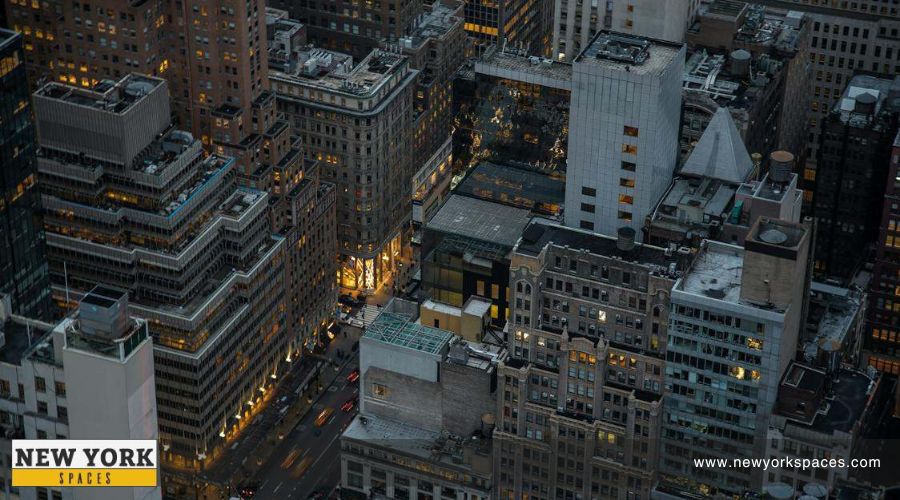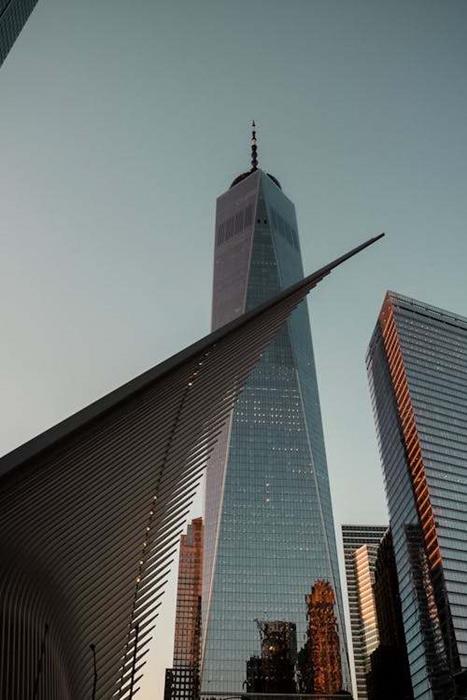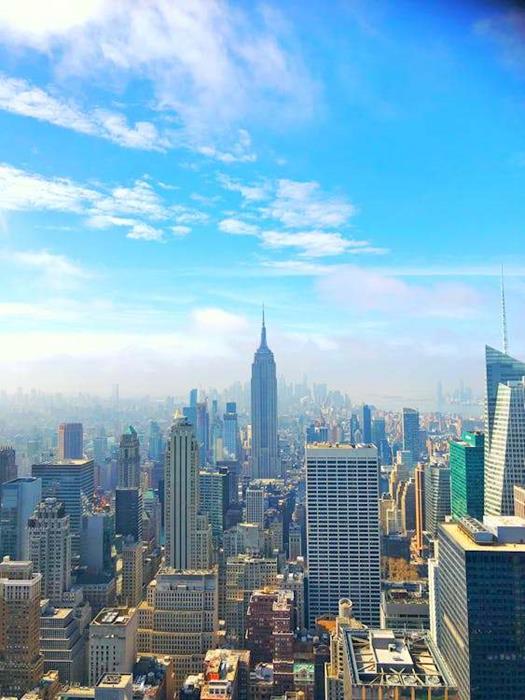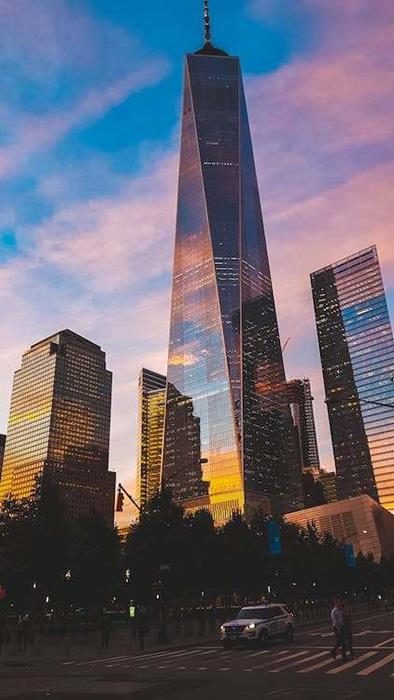New York City, a vibrant tapestry of architectural diversity, presents a fascinating challenge to anyone attempting to quantify its buildings. From the soaring skyscrapers of Manhattan to the historic brownstones of Brooklyn, the city’s ever-changing skyline makes pinning down an exact count a complex endeavor. This constant state of architectural flux, driven by urban development and historical preservation, reflects the dynamic spirit of the city, making the simple question of “How many buildings are there in NYC?” a gateway to exploring the rich urban fabric of this iconic metropolis.
Quantifying the City’s Structures
The quest to quantify New York City’s buildings begins with navigating through a myriad of data sources, with the New York City Department of Buildings (DOB) at the forefront. This municipal agency maintains a comprehensive database of all structures in the city, including permits for construction, demolition, and renovation. Other critical sources include property records, tax assessments, and historical registries, each contributing pieces to the vast puzzle of the city’s architectural inventory. These records are not just static numbers; they are dynamic reflections of the city’s growth, encapsulating the ebb and flow of its urban development.
Current Estimates
Diving into these data sources reveals a staggering estimate: New York City is home to over 1 million buildings. This figure is a testament to the city’s expansive urban sprawl, stretching from the dense commercial districts of Midtown Manhattan to the residential enclaves of Staten Island. Each building, whether a towering skyscraper or a modest family home, plays a role in shaping the city’s dense urban fabric. This million-plus figure is more than a statistic; it’s a narrative of the city’s relentless expansion and its enduring appeal as a hub of culture, commerce, and community.
Challenges in Counting
However, arriving at this estimate is no simple feat. The task is complicated by the city’s dynamic nature, where new buildings rise from the ground daily while others meet their end through demolition. Renovations and conversions further blur the lines, transforming the purpose and structure of existing buildings without changing their outward count. These activities, coupled with the bureaucratic labyrinth of permits, records, and reports, make maintaining an exact, up-to-date count an ongoing challenge. The numbers are in constant flux, reflecting the pulse of a city that is perpetually reinventing itself, making the count of buildings in New York City a moving target that captures the vibrant complexity of urban life.
A Borough-by-Borough Breakdown
A detailed look into each of the five boroughs—Manhattan, Brooklyn, Queens, the Bronx, and Staten Island—discussing the unique architectural styles, types of buildings, and how each contributes to the overall building count.
- Manhattan: Manhattan, the heart of New York City, is synonymous with its breathtaking skyline, a testament to the city’s architectural ambition and prowess. This borough is a showcase of famous skyscrapers such as the Empire State Building, Chrysler Building, and the newer One World Trade Center, each telling a story of an era in NYC’s development. Beyond these towering giants, Manhattan is also home to historic buildings that offer a glimpse into the city’s past, from the stately brownstones of the Upper West Side to the cast-iron facades in SoHo. These structures, set against the backdrop of Central Park’s green expanse and the bustling streets of Times Square, contribute to the iconic and diverse architectural tapestry that defines Manhattan.
- Brooklyn: Brooklyn presents a different facet of New York’s architectural diversity with its eclectic mix of residential neighborhoods and burgeoning industrial areas. The borough is known for its charming row houses, classic brownstones, and modern condo developments, particularly in neighborhoods like Brooklyn Heights and Williamsburg. These residential areas, with their community-oriented design, stand in contrast to the repurposed warehouses and factories of DUMBO and Bushwick, which reflect Brooklyn’s industrial past and its transformation into a hub of arts and innovation. This blend of old and new, residential and industrial, gives Brooklyn a unique architectural identity within the city.
- Queens: Queens, one of the most ethnically diverse urban areas in the world, mirrors this diversity in its architecture. The borough features a range of building types, from the low-rise, single-family homes in neighborhoods like Flushing and Astoria to the high-rise commercial towers that mark the skyline of Long Island City. This architectural variety reflects the borough’s history as a collection of small towns and communities that have been absorbed into the urban fabric of New York City, each contributing its architectural flavor to the mix.
- The Bronx: The Bronx, with its rich history and cultural vibrancy, offers a unique architectural landscape that blends historic sites with modern developments. The borough is home to landmarks such as the Yankee Stadium, the Bronx Zoo, and the New York Botanical Garden, set alongside newer housing developments and commercial projects. This juxtaposition of the old and the new highlights the ongoing evolution of the Bronx, as it retains its historical roots while embracing modern growth and revitalization.
- Staten Island: Staten Island provides a contrast to the urban density of the other boroughs with its less dense, more suburban landscape. The borough is characterized by its detached single-family homes, townhouses, and a smattering of low-rise apartment buildings, offering a quieter, more residential experience. This suburban feel is complemented by the preserved historic districts, such as St. George and Snug Harbor, which feature Victorian and Colonial-style homes, adding to the borough’s architectural diversity. Staten Island’s blend of suburban comfort and historical charm makes it a unique component of New York City’s architectural mosaic.
The Ever-Changing Cityscape of New York City
New York City’s skyline is a living testament to the city’s relentless transformation, a canvas where the past, present, and future converge. This dynamic cityscape is shaped by a myriad of forces, from the ambitious visions of urban developers to the meticulous frameworks of zoning laws, all operating within the broader context of economic trends and societal needs.
The Drivers of Urban Development
- Urban Development Initiatives: New projects continually emerge, driven by the city’s need for residential, commercial, and mixed-use spaces. These initiatives often seek to address the city’s growing population and its evolving urban lifestyle, leading to the development of towering skyscrapers, sprawling residential complexes, and innovative public spaces.
- Economic Factors: The real estate market’s ebbs and flows play a crucial role in shaping the cityscape. Economic booms lead to a surge in construction, with developers eager to capitalize on favorable market conditions. Conversely, downturns can slow the pace of new projects but can also lead to creative repurposing of existing structures.
The Role of Zoning Laws
Guiding Urban Growth
Zoning laws act as the blueprint for the city’s development, delineating where and what types of buildings can arise. These regulations ensure that the city grows in a balanced manner, with considerations for sunlight, air quality, and the preservation of historic districts.
Evolving Regulations
As the city’s needs change, so too do its zoning laws. Amendments and overhauls to these regulations are common, each reshaping the city’s potential for new development. For instance, recent rezoning efforts in neighborhoods previously dominated by industrial or low-density residential use have opened the doors for high-density commercial and residential projects.
Economic Factors at Play
- Market Demands: The demand for office space, housing, and retail areas directly influences construction trends. High demand in certain sectors can lead to a construction boom, transforming once-quiet neighborhoods into bustling urban centers.
- Investment Trends: Global and local investment patterns also steer the city’s development. Foreign and domestic investors alike seek opportunities within the city’s real estate market, funding new developments that promise to redefine neighborhoods and, by extension, the city’s skyline.
The Dynamics of Construction and Demolition
Constructing the New: Each new building that rises adds a layer to the city’s rich architectural tapestry. From luxury high-rises offering panoramic views of the city to innovative office spaces designed for the future of work, new constructions reflect the city’s ongoing evolution.
Demolishing the Old: Demolition is an equally significant aspect of urban change. Older buildings, sometimes deemed unsafe or unsuitable for modern needs, are torn down, making way for new structures. This cycle of demolition and construction is a key driver of the city’s dynamic building count.
The Impact on the City’s Building Count
The interplay of these factors leads to a constantly changing cityscape, where the number of buildings fluctuates with each new construction and demolition. This ever-evolving skyline is not merely a reflection of New York City’s physical growth but also a symbol of its unyielding adaptation to the changing needs and dreams of its inhabitants. The city’s building count, therefore, is more than a statistic; it’s a narrative of continuous transformation, a story of a city perpetually in motion.
Preservation vs. Progress – Navigating New York City’s Architectural Legacy and Future
New York City stands at the crossroads of preservation and progress, a metropolis where the echoes of history and the whispers of the future mingle in its streets and structures. This delicate balance between safeguarding architectural heritage and fostering urban development is a defining feature of the city’s identity, shaping its landscape and its narrative.
The Commitment to Historic Preservation
- Landmark Preservation Commission (LPC): At the heart of NYC’s preservation efforts is the LPC, a body dedicated to protecting buildings and districts that represent significant periods of the city’s history. Through designation and regulation, the LPC ensures that the architectural integrity of these landmarks is maintained for future generations.
- Historic Districts: Beyond individual buildings, entire neighborhoods are often encapsulated within historic districts, preserving the collective charm and character of areas that have remained relatively unchanged over decades or even centuries. These districts, such as Greenwich Village or Brooklyn Heights, serve as living museums, offering a glimpse into the city’s past amidst the modern urban tapestry.
The Drive for Urban Development
- Economic and Social Imperatives: The push for progress is driven by economic and social imperatives, from the need for additional housing to accommodate a growing population to the demand for modern commercial spaces that cater to the evolving needs of businesses and consumers.
- Innovative Architecture and Sustainability: New developments are not just about expanding the city’s building count; they’re about pushing the boundaries of architecture, incorporating sustainable design principles, and enhancing the city’s resilience in the face of environmental challenges.
Striking a Balance
- Adaptive Reuse: One of the ways NYC navigates the preservation-progress dichotomy is through adaptive reuse, a process where old structures are given new life with different purposes. This approach allows the city to retain its historical essence while adapting to contemporary needs, as seen in projects like the High Line, where an obsolete rail line was transformed into a beloved urban park.
- Sensitive Integration of the New with the Old: In areas where new developments are introduced within or adjacent to historic districts, careful consideration is given to ensure that these modern structures complement and enhance, rather than overshadow, the existing architectural fabric. This often involves architectural review processes and community engagement to find a harmonious design language that bridges the old and the new.
The Cultural and Economic Implications
Cultural Heritage as an Asset
NYC’s approach to balancing preservation with progress underscores the city’s recognition of its cultural heritage as an invaluable asset, attracting millions of visitors each year and enriching the lives of its residents.
Economic Vitality through Development
At the same time, new developments contribute to the city’s economic vitality, creating jobs, stimulating investment, and ensuring that NYC remains a dynamic, forward-looking metropolis.
In navigating the delicate balance between preserving its storied past and embracing a bold future, New York City exemplifies the complexities and rewards of urban stewardship. This ongoing dialogue between preservation and progress not only defines the city’s physical landscape but also reflects its broader commitment to honoring its history while forging ahead into the future.
Architectural Diversity and Cultural Significance – The Essence of New York City
New York City’s buildings are more than mere structures; they are the storied chapters of an ever-unfolding urban narrative, encapsulating the dreams, struggles, and triumphs of its diverse populace. This architectural diversity is not just a visual spectacle but a profound reflection of the city’s complex cultural and historical tapestry, embodying the dynamic interplay between tradition and innovation that defines the metropolis.
Chronicles of Brick and Mortar
- Echoes of History: Each building in New York City, from the Gothic Revival churches in Manhattan to the quaint Victorian homes in Staten Island, serves as a custodian of the city’s rich historical legacy. They stand as silent witnesses to the evolving epochs, from the gilded age of industrial magnates to the waves of immigrants who sought new beginnings in the Lower East Side’s tenements.
- Cultural Mosaic: The architectural styles scattered across the city’s boroughs narrate the tales of its multicultural roots. The Beaux-Arts grandeur of the New York Public Library, the Renaissance Revival splendor of The Bronx’s Grand Concourse, and the modernist simplicity of the United Nations Headquarters collectively paint a picture of a city that’s as diverse in its architecture as it is in its population.
Framework of Everyday Life
- Spaces of Belonging: Beyond their grandeur and historical value, the city’s buildings are intimate spaces of personal and communal life. They are the homes where families grow, the corner stores that nurture neighborhoods, and the local landmarks that become intertwined with personal memories, contributing to the unique identity of each community within the vast urban expanse.
- Centers of Civic Engagement: The city’s public buildings—its schools, libraries, and community centers—embody the democratic ideals and civic spirit of New York. These spaces, framed by architectural ingenuity, are arenas of learning, cultural exchange, and social activism, vital for sustaining the city’s communal lifeblood.
Visioning the Urban Future
- Harbingers of Tomorrow: The skyline of New York City, ever-reaching towards the horizon, symbolizes the city’s relentless pursuit of the future. Contemporary structures, marked by glass and steel, are not just feats of engineering but manifestations of a city constantly in flux, embracing sustainable practices and technological innovations to meet the challenges of the 21st century.
- Adaptive Narratives: The ongoing transformation of the city’s architectural landscape, from the adaptive reuse of historic warehouses in Brooklyn to the emergence of green rooftops across the boroughs, illustrates New York’s resilience and adaptability. These evolving spaces reflect a city that honors its past while boldly marching towards an inclusive, sustainable future.
In the grand tapestry of New York City, each building contributes a thread to the intricate design, weaving together stories of aspiration, resilience, and community. The architectural diversity and cultural significance of these structures transcend their physicality, offering a window into the soul of the city, a confluence of myriad narratives that together chart the course of this ever-evolving metropolis.
Conclusion
While it is challenging to pinpoint an exact number due to the dynamic nature of urban development, it is safe to say that New York City is home to over 1 million buildings. This figure is a moving target, reflecting the city’s continuous growth and transformation. As New York City marches forward, its skyline will continue to change, but the essence of the city, as captured in its diverse array of buildings, will remain a constant testament to its enduring vibrancy and resilience.





